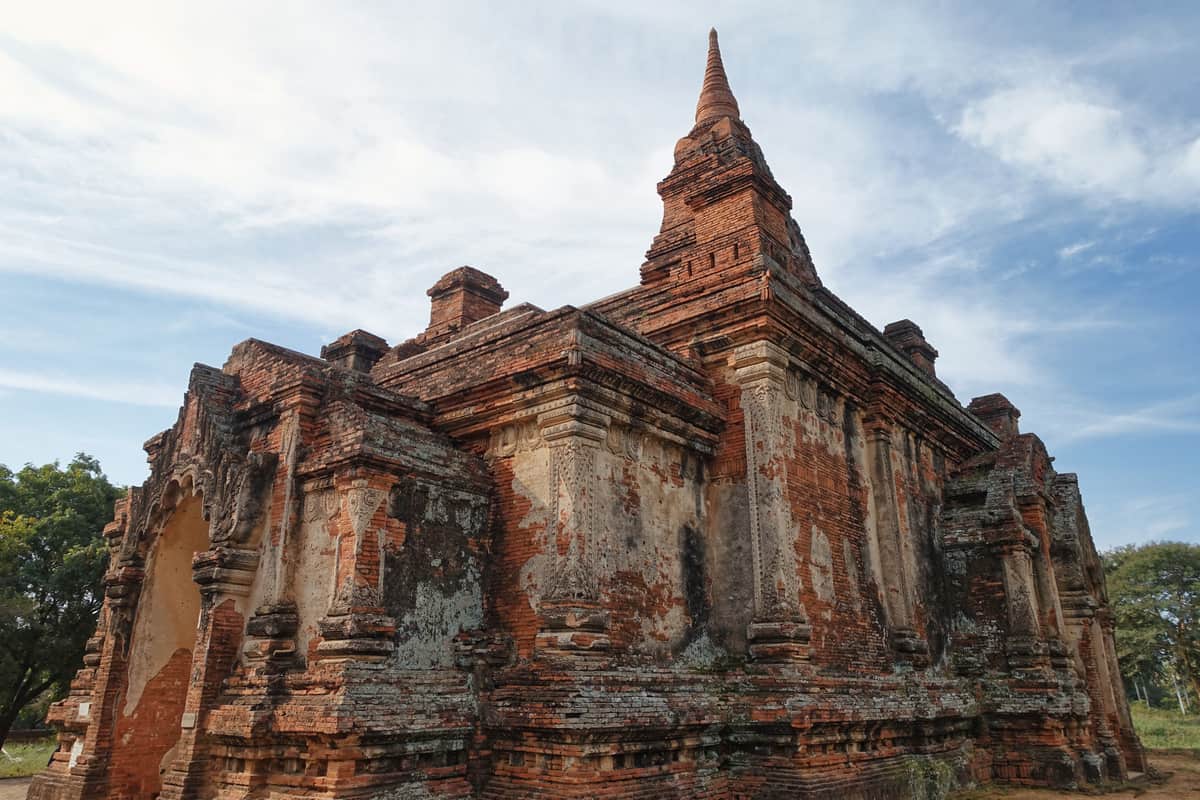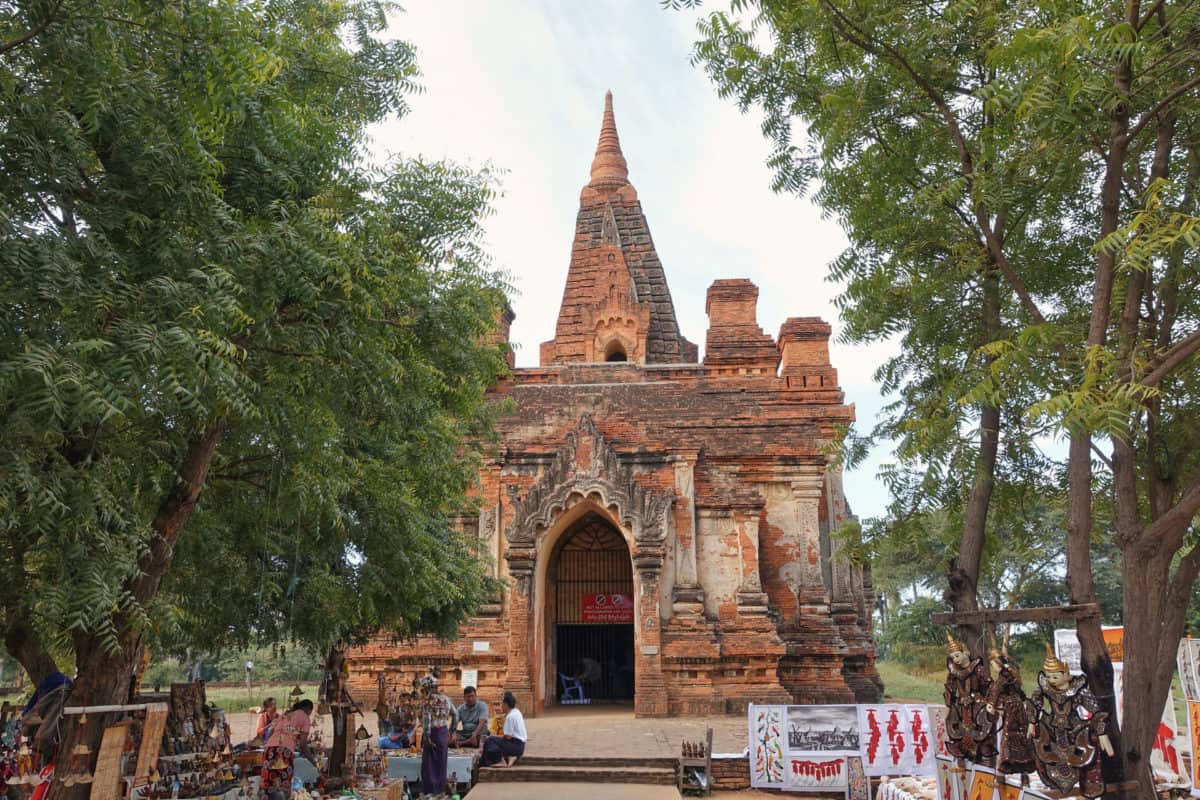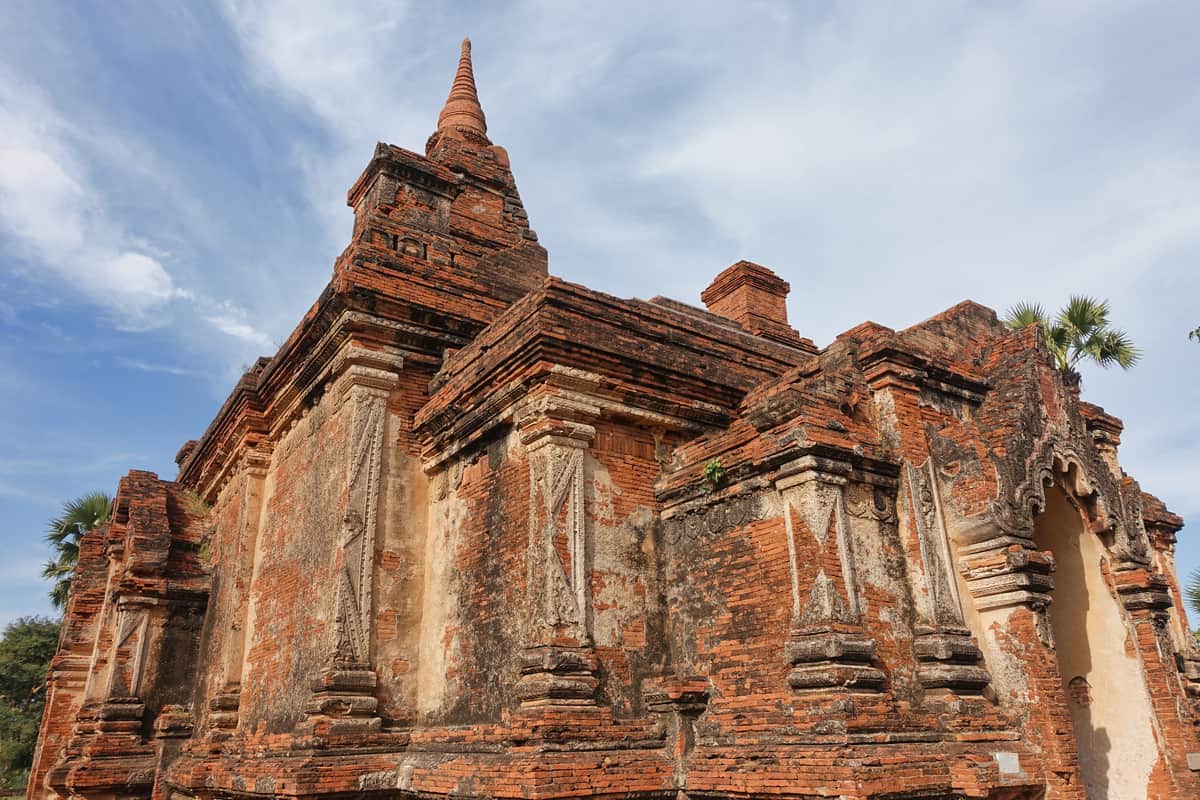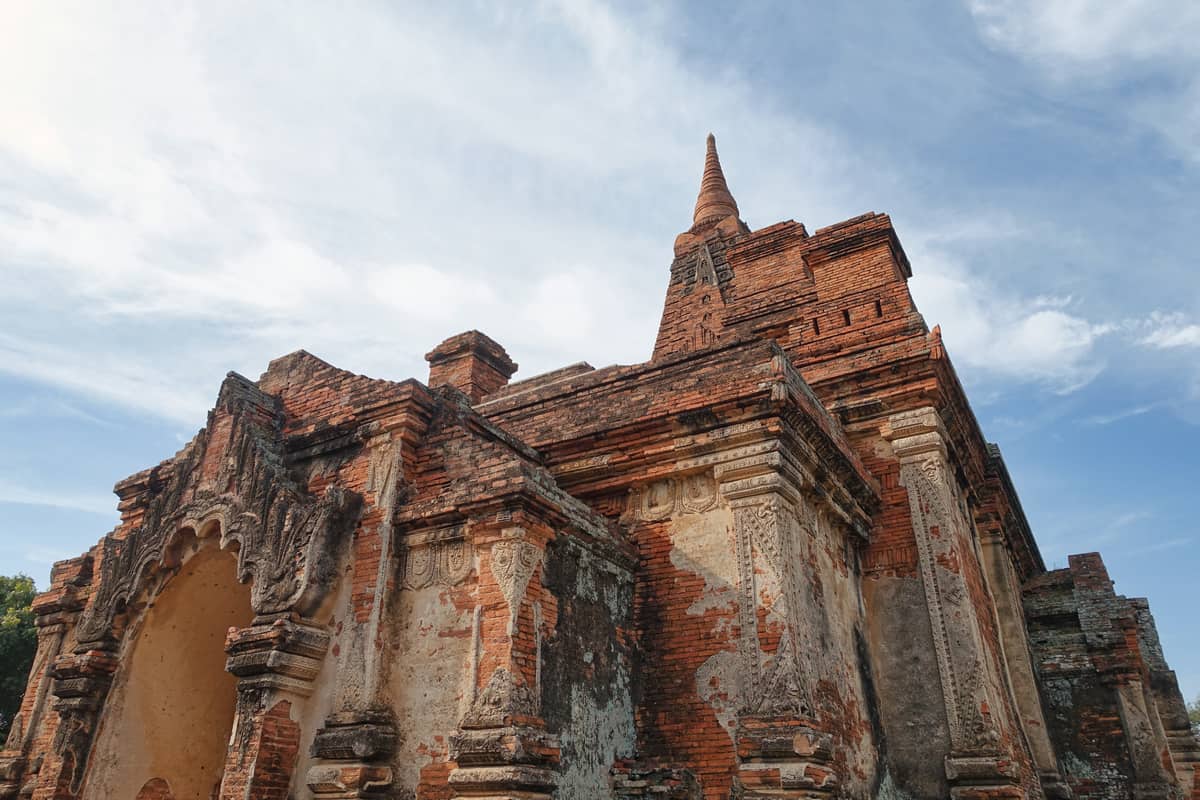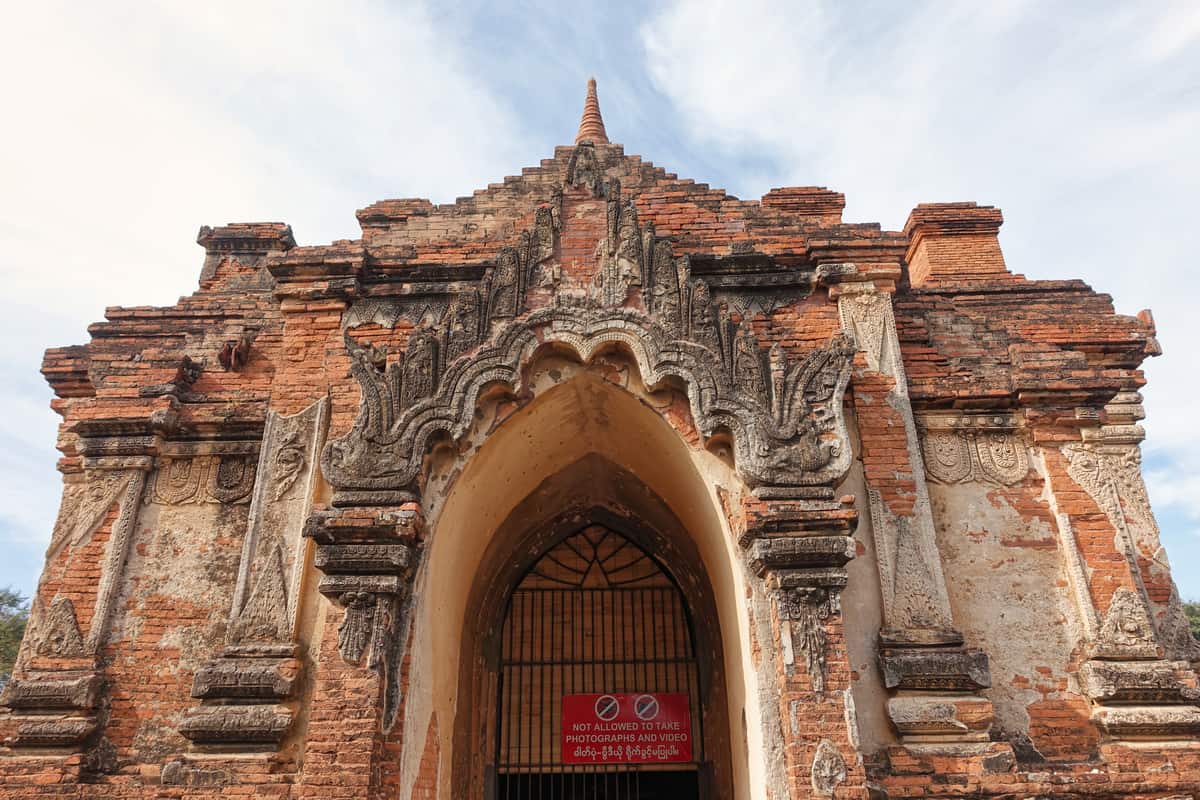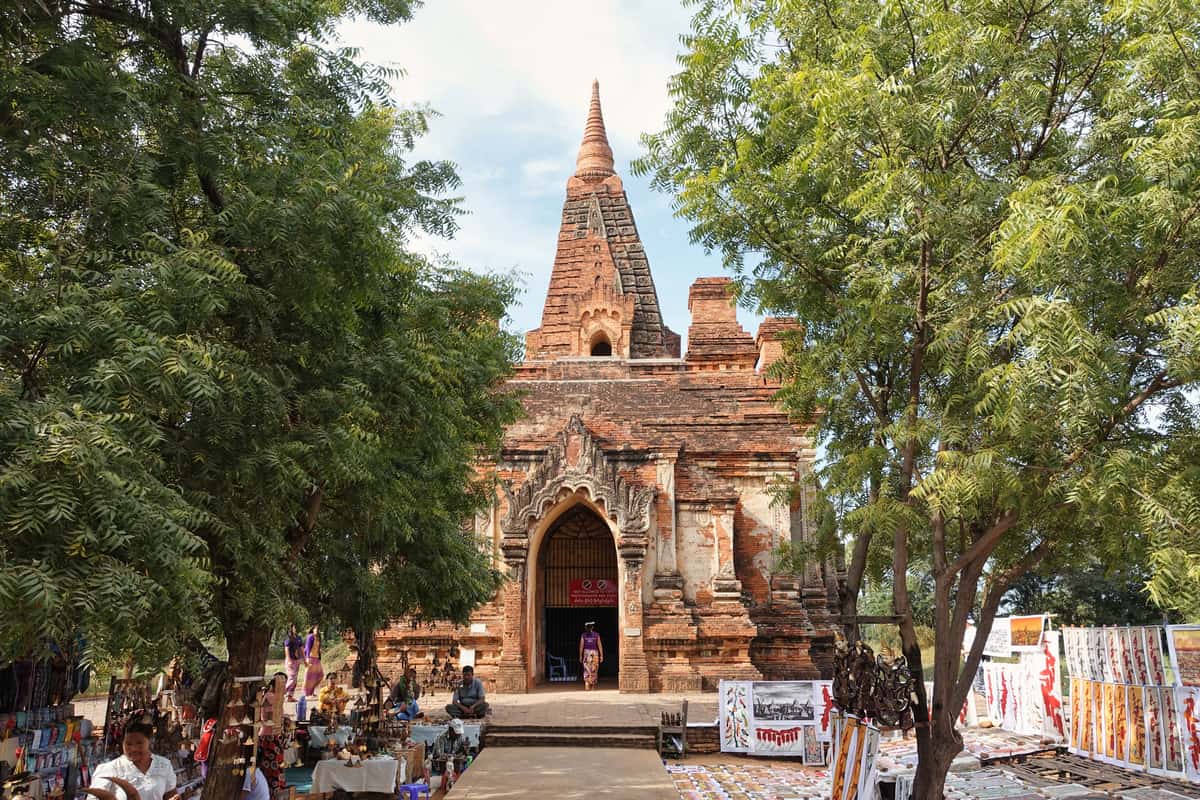Southeast Asia Tour 2015
Bagan | Myanmar
30 Nov 2015 | Mon
Day 12 of 46
Gubyaukgyi Temple Myinkaba
The Gubyaukgyi Temple is located in the ancient city of Myinkaba, located in the Bagan Archaeological Zone in Myanmar. Dating back to 1113 AD, this temple was built during the reign of King Kyansittha of Pagan Dynasty. The temple stands out for its unique two-story structure and its intricate carvings depicting scenes from Buddhist mythology.
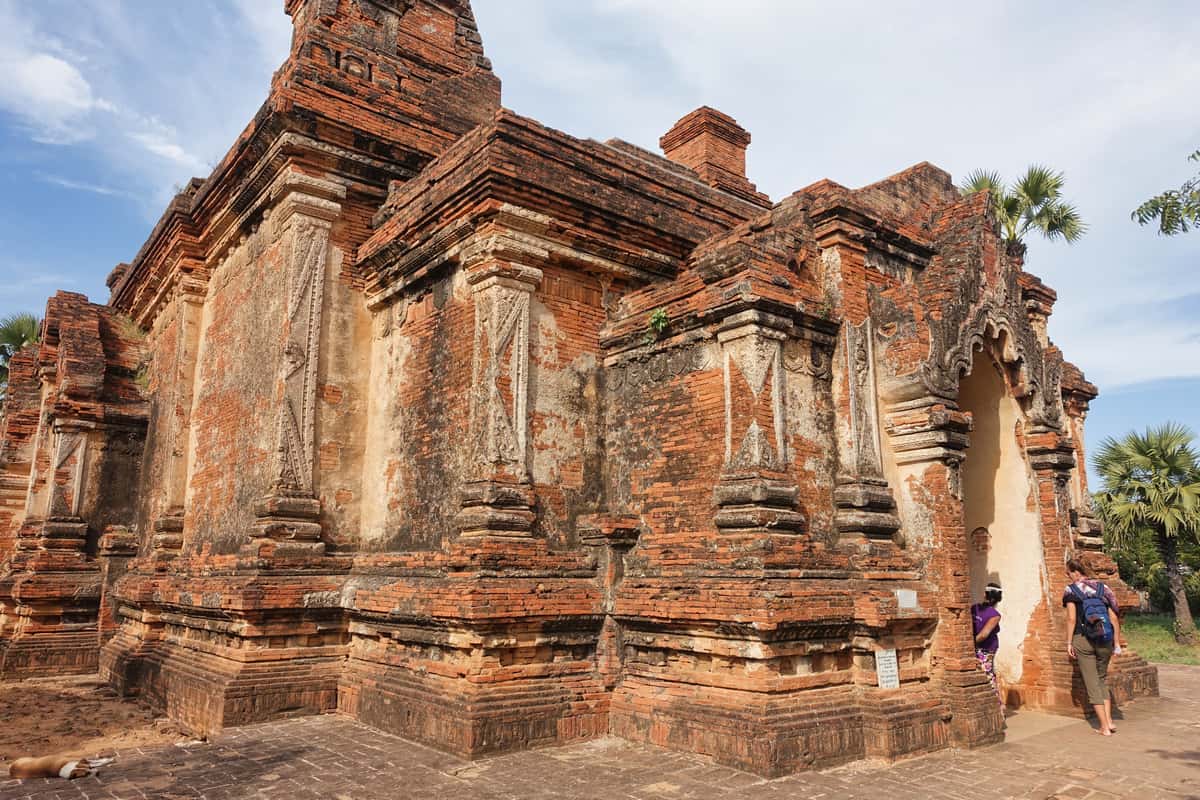
The temple consists of a lower story and an upper story, both with Buddha statues set into their walls. Inside the lower story, visitors can find a huge seated Buddha statue surrounded by carvings depicting scenes from Hindu epics such as Ramayana and Mahabharata. The upper level has four entrances leading to small chambers with murals that depict Jataka tales – stories about the life of Buddha before his enlightenment.
